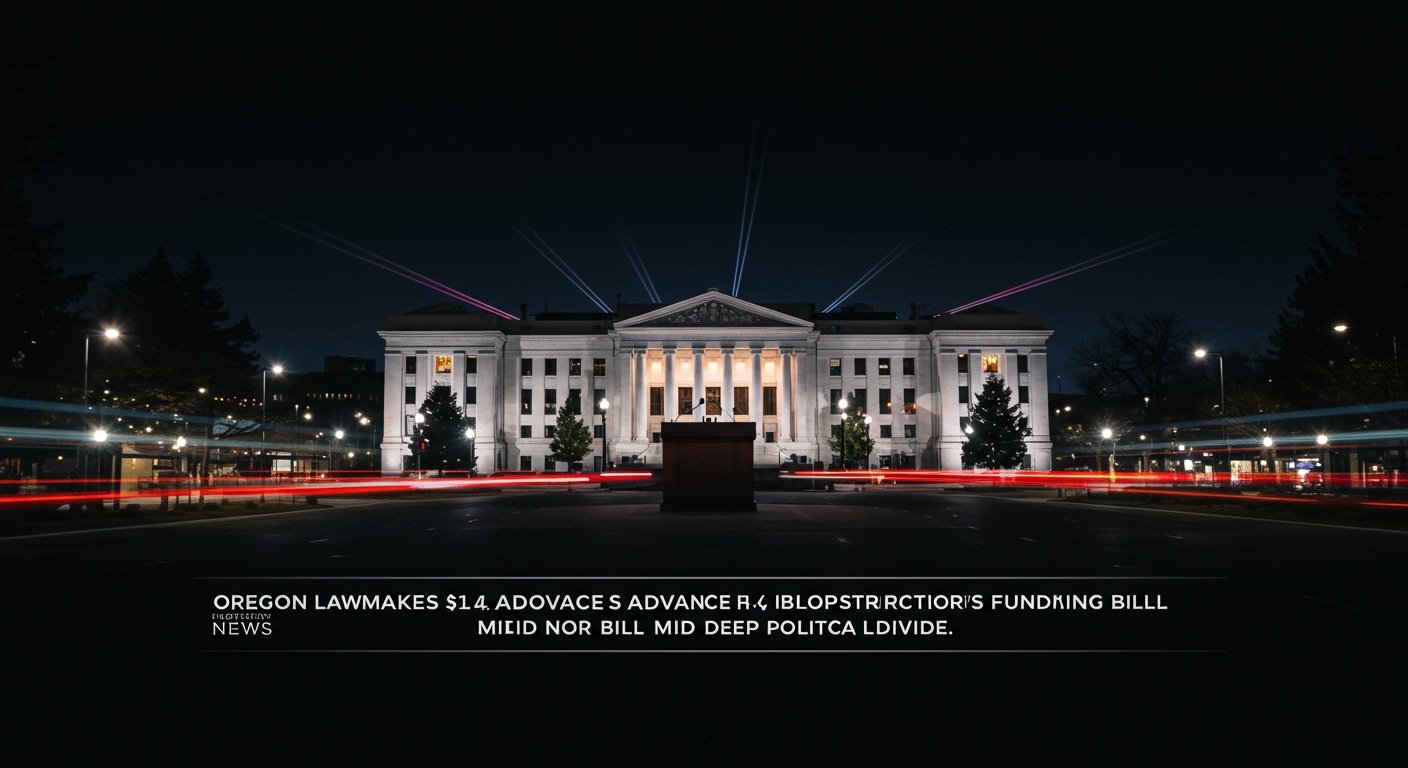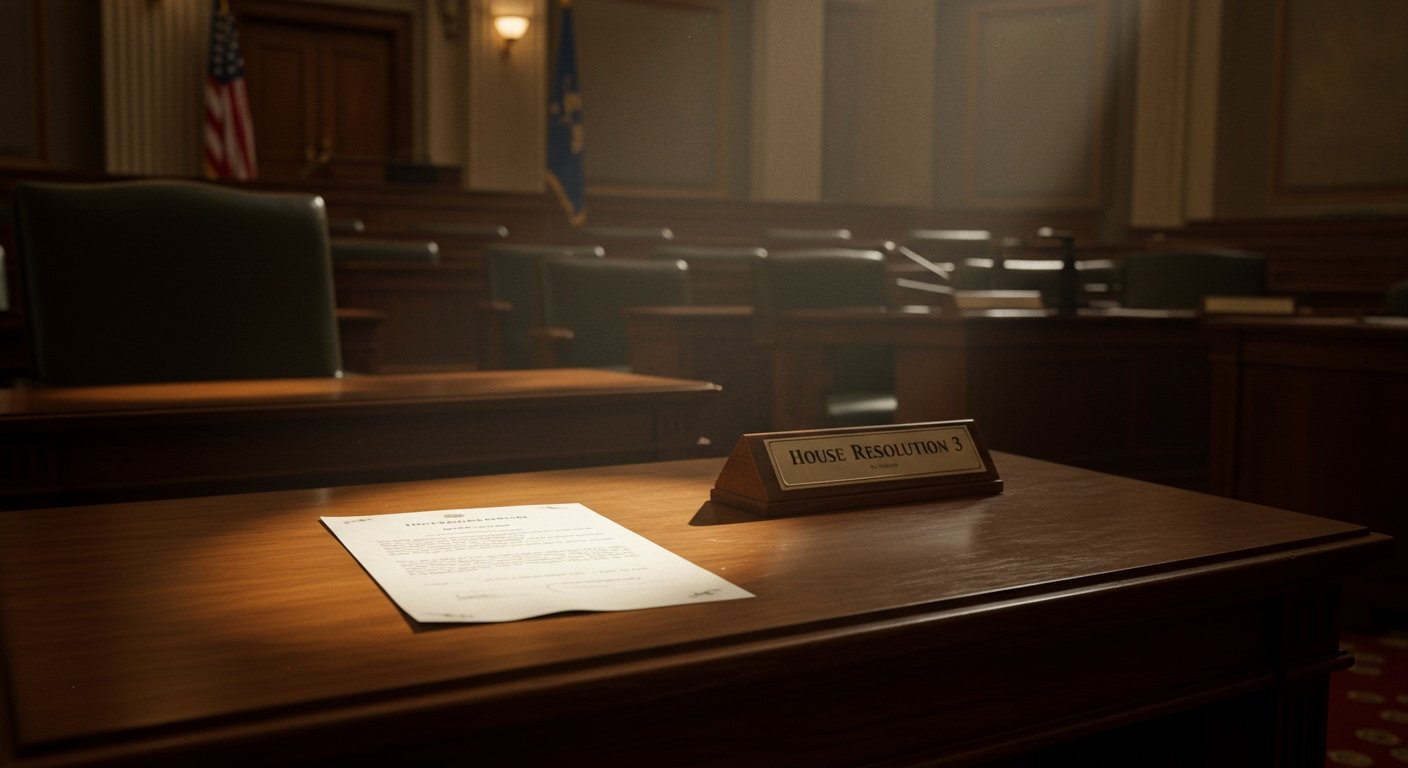PORTLAND, Oregon — A pivotal legislative panel in Oregon has narrowly approved a sweeping measure designed to inject nearly $14.6 billion into the state’s transportation infrastructure over the next decade. The bill, which relies on significant increases in taxes and fees, now faces an uncertain path forward as it heads to the House floor, underscoring the deep political divisions within the state legislature.
The Joint Committee on Transportation Reinvestment in Oregon, tasked with crafting a long-term funding solution for the state’s roads, bridges, and transit systems, voted 7-5 along strict party lines on Friday to advance an amended version of House Bill 2025. The outcome reflects the contentious nature of the proposal, which seeks to address pressing infrastructure needs through broad-based revenue generation.
Fueling Future Transport: Proposed Tax and Fee Hikes
Central to House Bill 2025 are provisions that would substantially increase the financial burden on drivers and the freight industry. The most significant change is a proposed increase in the state’s gasoline tax. Currently set at $0.40 per gallon, the bill calls for raising this rate to $0.55 per gallon over the next few years.
The increase would be implemented in two phases. The first phase would see a 10-cent per gallon increase take effect in January 2026. A second phase would add an additional 5 cents per gallon starting in 2028, bringing the total state gas tax to $0.55 per gallon.
In addition to the gasoline tax hike, the bill also targets diesel fuel. Currently taxed differently than gasoline, House Bill 2025 proposes taxing diesel at the same rate as regular gasoline. This change is expected to generate substantial revenue, particularly from commercial trucking and transportation sectors, but has also raised concerns among businesses reliant on diesel fuel.
Proponents argue that these increases are essential to keep pace with rising construction costs, address years of deferred maintenance, and fund necessary expansions and improvements to the statewide transportation network. They contend that the current funding mechanisms are insufficient to support the Oregon Department of Transportation (ODOT) in meeting the state’s growing transportation needs over the next 10 years, hence the projected $14.6 billion target.
Governance Structure Under Scrutiny
Beyond revenue generation, House Bill 2025 includes a notable provision aimed at restructuring the leadership of the state’s transportation agency. The bill seeks to restore the governor’s power to hire and fire the director of the Oregon Department of Transportation. This authority has rested with the Oregon Transportation Commission since 2017.
The proposed shift is framed by supporters as a way to increase legislative and gubernatorial scrutiny over ODOT’s operations and priorities. Granting the governor direct control over the agency’s top position could potentially streamline decision-making and align the department’s direction more closely with the executive branch’s agenda.
However, critics of this change may express concerns about potentially politicizing the leadership of a critical state agency, suggesting that control by a commission provides a level of insulation from short-term political pressures and ensures a focus on long-term planning and technical expertise.
Political Fault Lines Exposed
The 7-5 vote within the Joint Committee on Transportation Reinvestment in Oregon vividly illustrates the deep partisan divide surrounding this legislation. The ‘yes’ votes came from members of one party, while the ‘no’ votes were cast by members of the opposing party, highlighting the lack of bipartisan consensus on the bill’s approach.
Opposition to House Bill 2025 stems primarily from Republican lawmakers. Their concerns often center on the scale of the tax and fee increases, potential negative impacts on residents’ household budgets and business operating costs, and questions about ODOT’s efficiency and accountability in utilizing previous funding.
Adding complexity to the bill’s prospects, the summary notes that opposition also exists among “some key Democrats.” This suggests that the divisions are not solely along party lines, and that securing sufficient support on the House floor will require navigating dissent from members of the majority party as well. Potential concerns from these Democrats could range from the regressivity of fuel taxes on lower-income individuals to the specific projects or priorities included, or excluded, in the proposed spending plan.
The lack of broad support signals a challenging legislative battle ahead. For a bill of this magnitude, particularly one involving significant tax increases, building a broad coalition is often necessary for passage. The current environment indicates that such a coalition has yet to fully materialize.
The Road Ahead: Uncertainty on the House Floor
With the committee’s approval secured, House Bill 2025 now advances to the full Oregon House of Representatives for consideration. The move marks a critical step in the legislative process, bringing the debate over the state’s transportation future to a larger arena.
However, the bill’s prospects remain uncertain. The significant opposition witnessed in committee, combined with the reported concerns from key Democrats, means that passage in the House is far from guaranteed. Lawmakers will face intense lobbying from various interest groups, including transportation advocates, business associations, environmental organizations, and consumer groups, all vying to influence the outcome.
Debates on the House floor are expected to focus not only on the necessity of the funding but also on the equity of the proposed tax structure, the transparency and accountability of ODOT, and the specific projects and priorities the $14.6 billion would fund. Amendments could be proposed to alter the tax rates, change the spending allocations, or modify the ODOT governance structure.
The fate of House Bill 2025 will ultimately depend on legislative negotiations, the ability of proponents to address concerns raised by skeptical members, and the political will to enact a potentially unpopular tax package to fund critical infrastructure needs. The coming weeks will be decisive in determining whether Oregon can pass this ambitious transportation funding plan or if the political divisions will lead to its derailment, leaving the state’s infrastructure challenges potentially unresolved.




